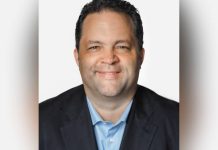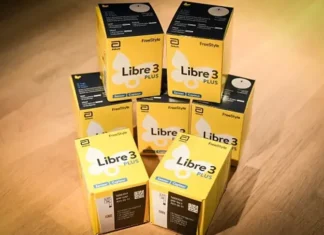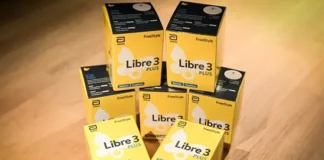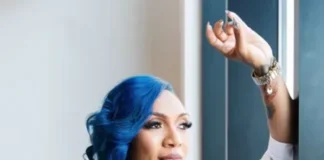
When I get former NAACP CEO and president Ben Jealous on the phone, he’s in the middle of driving from Gulfport to Jackson, Mississippi.
That’s because in November, Jealous was named the new executive director of the Sierra Club, a 130-year-old grassroots organization that “fights for environmental and social justice.”
Jealous is the Sierra Club’s first leader of color, and his selection comes two years after the organization’s apology for founder John Muir’s racist views and statements about Black and Indigenous people.
Indeed, in a post on the Sierra Club website announcing Jealous’ selection as executive director, interim head Loren Blackford said his appointment “can point us to a future where we recognize the disproportionate impact of climate change and environmental decay, based on race, gender, class and other identities and that it will truly take all of us to preserve a livable planet and create a transition from an exploitative economy to one that works for everyone.”
In preparation for the role, Jealous has been on a five-week listening tour, visiting the organization’s chapters across the United States.
“Right now, my daily life is sitting in a van going from city to city,” he says with a laugh. The day before we spoke, he trekked roughly 250 miles from Birmingham to Mobile, Alabama, to hear what’s on the minds of Sierra Club volunteers and staff.
But Jealous has a long and deep track record in the climate justice space. During his time as president of the NAACP, he launched its first-ever climate justice program and oversaw a 2012 report on 378 coal-fired power plants and their effects on low-income communities and communities of color. Prior to joining the NAACP, Jealous was a journalist who investigated environmental justice atrocities in Mississippi.
Read on to find out more about his environmental roots and what Jealous thinks about the intersection between the climate crisis and civil rights.
WIB: Can you think back to a moment in your childhood or adolescence when you first became aware of environmental issues?
I spent my school years running through the redwoods with my friends in Monterey County, California. Big Sur was my playground. The Sierras were my playground on family trips. Sometimes we would even sleep inside the trees. Redwoods are fed by the clouds. So, when you’re struck by lightning, the base burns out, but the tree doesn’t burn out. You end up with a teepee inside of a redwood tree. In my early teens, there was a lot of concern about an aggressive attempt to clear-cut growth redwoods in California. I felt deeply connected to those groves, from my earliest childhood memories. That spurred me to get involved in founding the first high school chapter of the Student Environmental Action Coalition. I helped organize a rally that my parents were involved in. The first protest that I organized was an anti-clear-cutting rally at the California State Capitol.
WIB: Why did you move from the civil rights space to the environmental world?
BJ: It’s all the same movement. That’s how it is on the ground. When I was a kid, there was tremendous overlap between the local NAACP chapter and the local Sierra Club chapter. We have both — California has 13 original chapters of the Sierra Club, and every other state just has one. In Monterey County, we have both the Ventana Chaplin Sierra Club with the Monterey branch of the NAACP. There was a lot of overlap. When I was president of the NAACP, I launched the NAACP’s climate justice program. We created climate justice committees. The fight to stop corporations from treating people as disposable is the same as the fight to stop corporations from treating our workplaces as disposable.
WIB: Have you faced any challenges as a Black man in the green space?
BJ: My first job at a major green group was when I was 21-years-old. I was called into the lone Black executive’s office by her. I was asked a very simple question: how does it feel to work for a white organization that will not change? That conversation and the conversations that have flowed from it convinced me that my time would best be spent assisting the environmentalist movement, not working inside of it. That led to a career as a journalist who investigated environmental justice atrocities in Mississippi. I was an organizer who launched the NAACP climate justice program and was hired as a leader and a board member of multiple environmentalist groups. At the end of the day, I have no regrets. God always has a plan, and all of that prepared me for this.
WIB: How do you think race plays a role in the climate crisis?
BJ: The NAACP produced a report mapping the places most likely to be impacted by climate-related disasters: low-income communities and communities of color regardless of income level. Low-income people tend to live in places that are susceptible to floods and tornadoes, and sea-level storm surges. Being a person of color generally puts you at higher risk for asthma and environmental-related illnesses. It also puts you at higher risk for exposure to climate-related disasters. Ultimately, that’s an artifact of the geography of colonialism and segregation.
WIB: Do you think climate change has a colonial legacy?
BJ: Climate change is the most existential crisis facing humanity. Stopping it will require us to organize and build coalitions across lines of division, originally shown in colonial times. I’ve been in this racial justice battle my entire life. It’s time that we recognize it doesn’t matter who is in first class. We have to get more serious about confronting the need to build a more inclusive green movement.
WIB: What have you found to be the greatest obstacle to progress in the environmental space?
BJ: First is our failure to see all the allies we have. The second is for us to internalize what Dr. King was trying to teach us when he was assassinated, which is that the persistence of poverty is ultimately an obstacle to anything good we want to do in this country. That’s also true for the environmental movement. If there isn’t a social injustice that is destroying the world, it’s poverty. The social injustice destroying the world is poverty. Poverty is the reason that an African nation auctions off its most precious rainforest to the gas industry and voters in West Virginia re-elect the politician who’s guaranteed to give a coal company the right to blow up the top of a mountain and dump it in a river and destroy both in the process.
For too long, the green movement allowed itself to imagine that you could save the earth in isolation from addressing major sources of social injustice. Dr. King was correct when he said we are all connected in a single garment of destiny. Our fates are all connected to the garment of destiny. The only way for us to succeed is to recognize that there are no disposable environmentalists. We need a coalition that is uncomfortably large. And our success would be assured the day that we succeed in building an economy that thrives on industries that help preserve the planet, not industries that profit off of destroying the planet.
WIB: What advice do you have to other Black environmentalists, especially those just getting involved in this work?
BJ: Encourage them to seek out elders in our community. The smartest thing to do is to seek out the elders and listen to them. That’s why I’m starting my tenure at the Sierra Club, taking a little over a month to listen to as many of our grassroots leaders as possible.
This interview has been edited and condensed for length and clarity.















